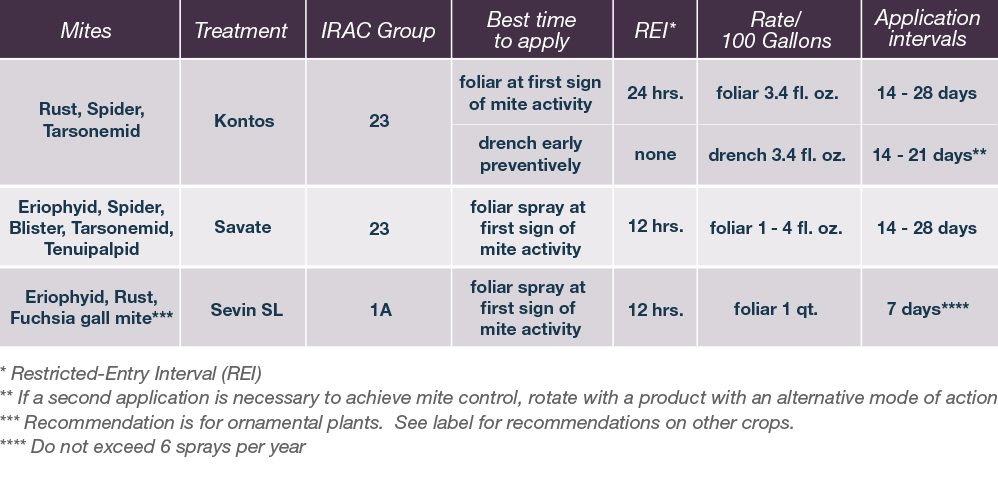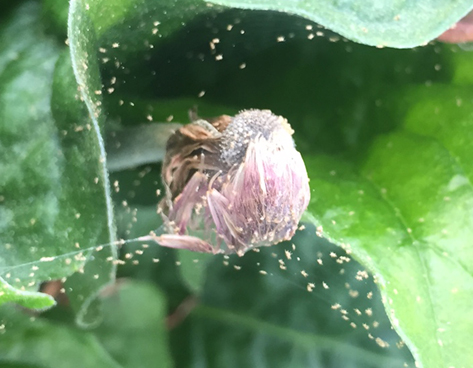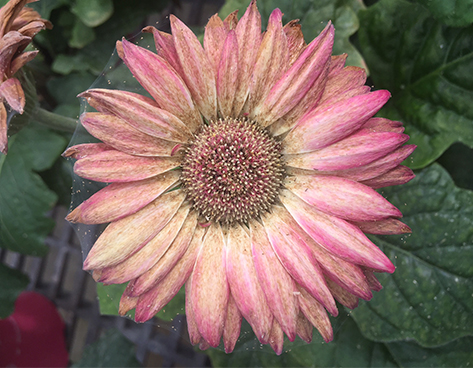Controlling Mites
Thousands of mite species feed-on and cause damage to plants grown in commercial production. Although mites are often grouped with insects, they are actually arachnids and more closely related to ticks and spiders. Adult mites have eight legs and piercing-sucking mouthparts used to suck fluids from host plants. In addition to direct damage, mites are capable of transmitting plant viruses making mite management critical in commercial production settings. The most common mites affecting ornamental plants in greenhouse and nurseries are spider mites.
What to look for
- Most mites damage plants by sucking cell contents from leaf tissue. The initial feeding damage appears as a stippling of tiny dots on the surface of affected leaves.
- Heavily infested leaves and branches may be covered in fine silken webbing (i.e. spider mites), but webbing may be minimal on some plants such as conifers or completely absent on some species.
- Severely affected leaves turn bronze to yellow in color and eventually drop off the plant.
- Most mites are tiny and require a hand lens to be seen, making them difficult to detect in the absence of symptoms. Some mites, particularly Eriophyid mites, are so tiny they require a microscope to be seen.
- Immature mites in the larvae stage have only six legs. The exception is Eriophyid mites, which have four legs in all stages of development.
Favorable Conditions & Host Range
- Most mites favor hot and dry conditions and are capable of multiplying rapidly with generations occurring within one week.
- Nearly all plant species have at least one species of mite that will feed on them. Mites attack a wide range of plants including annuals, perennials, bulbs, vegetables, trees and shrubs.
Cultural Control
- Frequent inspection of plant material is essential to prevent rapid buildup of mites in nurseries and greenhouses. This includes thorough inspection of new plant material for mites (and other pest and diseases) prior to moving them into production areas.
- Many weeds are susceptible hosts for mites and should be removed or controlled with herbicides.
- Remove weeds and escaped plants under benches, outside greenhouses, or adjacent to nursery stock to reduce the likelihood of mite infestations in growing areas. Also, minimize plant disposal sites.
Insecticide Solutions
Preventive insecticide applications are recommended. Kontos® and Savate® can be used on all stages of crop development for effective control of mites. Kontos is most effective when used preventively or when populations are first detected. Savate provides knockdown and residual control of all developmental stages of mites.
More information
Contact your Envu Ornamental Specialist for further assistance.

Fine silken webbing containing adult spider mites. Photo: Envu. |

Faded and discolored gerbera daisy flower from mite feeding. Photo: Envu. |


